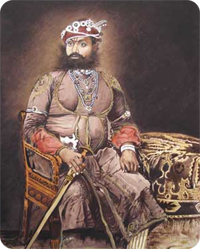Oil Paintings » Painting Supports » Paper Painting



Paper is a thin, flat material produced by the compression of fibres. The fibres used are usually natural and based upon cellulose. The most common material is wood pulp from pulpwood (largely softwood) trees such as spruces, but other vegetable fibre materials including cotton, linen, and hemp may be used.
A stack of 500 sheets of paper is called a Ream. The edges of paper sheets can act as very thin, fine-toothed saws, leading to paper cuts.
Whether done by hand or with a Fourdrinier Machine, the paper making process has four simple steps:
The material to be used for making paper is first converted into pulp, a concentrated mixture of fibres suspended in liquid. As many of these fibres are derived from natural sources, this process often requires many stages of separation and washing. Once the fibres have been extracted, they may also be bleached or dyed to alter the appearance of the final product.
The pulp mixture is then further diluted with water resulting in a very thin slurry. This dilute slurry is drained through a fine-mesh moving screen to form a fibrous web. A watermark may be impressed into the paper at this stage of the process. This moving web is pressed and dried into a continuous sheet of paper.
In the case of the mould process, a quantity of the pulp is placed into a form, with a wire-mesh base (or other draining device), so that the fibres are left coated on the mesh and excess water can drain away. At this time, pressure may be applied to remove more water through a squeezing action. The paper may then be removed from the mould, wet or dry, and go on to further processing.
Most mass-produced paper is made using a continuous (Fourdrinier) process to form a reel or web. When dried, this continuous web may be cut into rectangular sheets by slitting the web vertically and then cutting it horizontally to the desired length. Standard sheet sizes are prescribed by governing bodies such as the International Organization for Standardization (ISO).
The paper may actually be dried several times during its manufacture. Dry paper is much stronger than wet, so it is best to keep the paper dry to prevent it breaking and stopping the production line (sometimes the paper does break in which case it is converted back into pulp and fed into the line).
Paper trimmerto write or print on: the piece of paper becomes a document; this may be for keeping a record (or in the case of printing from a computer or copying from another paper: an additional record) and for communication; see also reading. Also a paper may represent a value:
In such cases making a copy that can not easily be distinguished from the original should be very difficult, to avoid abuse, see counterfeit.



